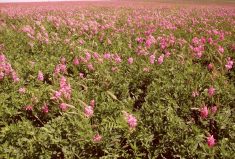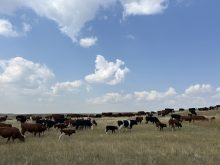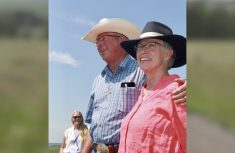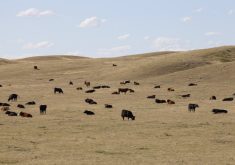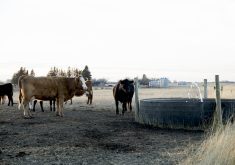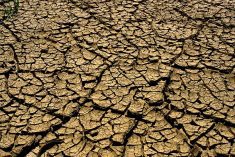As cover cropping gains interest, producers are looking at different types of plants that might work well to produce a diverse crop for grazing.
Because nature doesn’t favour monocrops, cover crops and intercrops are more resistant to drought-like conditions, cover cropping proponent say. With a drought that persisted through 2020, 2021, and into 2022 in certain areas of Canada, resisting drought is important to producers’ livelihood. There are certain plants producers can seed that will help in drought times.
Read Also

Canadian Beef Check-Off Agency reports on investments and activities
The check-off agency’s work behind the scenes is what ensures cattle check-off dollars are invested wisely, accounted for transparently and deliver measurable value back to producers and importers.
At the holistic management conference hosted by Prairie South Holistic Management near McCord, Sask. at the end of June, Avery Shepherd spoke about using sunflowers in cover crops. Shepherd is a bison producer and Imperial Seed rep based near Livelong, Sask. He says sunflowers are a good crop to plant in times of drought because they retain moisture.
“They’ve got a deep fibrous root system,” Shepherd says. “They pull moisture up. And they associate highly with mycorrhizal fungi. They help build up that component of the soil. And through mycorrhizal fungi, they can actually share their nutrients and moisture with other plants.”
Shepherd says in 2021, his own mixed crops — mostly barley crop mixtures that had a few sunflowers — performed better than the rest of their crops. He gives credit to the sunflowers for helping the crop thrive despite the dry weather.
However, Shepherd says to best use sunflowers, they need to be grown in a blend with a variety of other plants.
“They’re best grown with a group of other species,” he says. “On their own, there wouldn’t be an advantage. But grown with other species, you can use the synergistic effect of all the plants to gain a bit of an advantage in a drought situation.”
Kevin Elmy, based at Saltcoats, Sask., is also an Imperial Seed consultant and the founder of Cover Crops Canada. He agrees with Shepherd on how to use sunflowers, and adds that he also grows sunflowers in his cover crops.
According to Elmy, livestock will consume the sunflowers eventually.
“At first, they’re not all that excited about it,” he says. “For ourselves, I was custom grazing bison, and they didn’t touch them until November. And then about November second or third, we got a really hard frost on them. Then, by the seventh of November, (the sunflowers) were all gone. They ate all of them on three quarters.”
However, because sunflowers retain so much moisture and oil, they are usually best used for grazing and not hay.
“If you’re going to try and do dry hay, it’s a bit of a problem because they have a fairly coarse stem,” Elmy says. “So the dry down can be a bit of an issue.”
Producers also should keep an eye out for soil-borne diseases that can affect sunflowers. Otherwise, Elmy says the positives outweigh the negatives.
“The biggest concern is if you’re going to hay it, keep the rates extremely low. Otherwise, if you’re going to use it for grazing or silage, absolutely. They’re inexpensive seeds to get the seeds per square foot. And they’re something that we don’t have in our rotation. So it’s going to add plant diversity…So if we can have great blends that are going to be building soil, we’re going to be a lot friendlier on the rumen and we’re going to have better gains and we are going to have less methane, better feed, all of those things that we’re looking for in livestock production.”




